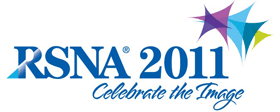
Abstract Archives of the RSNA, 2011
LL-MKS-TU1A
CT Arthrography of the Wrist Using a Novel Mobile Dedicated Extremity Cone Beam CT (CBCT)
Scientific Informal (Poster) Presentations
Presented on November 29, 2011
Presented as part of LL-MKS-TU: Musculoskeletal Imaging
Seppo K. Koskinen MD, PhD, Presenter: Clinical Advisor, Planmeca Group
Ville Haapamäki MD, PhD, Abstract Co-Author: Nothing to Disclose
Jari Salo MD, PhD, Abstract Co-Author: Research Consultant, Planmed Oy
Nina C. Lindfors MD, PhD, Abstract Co-Author: Research Consultant, Planmed Oy
Mika Karel Kortesniemi PhD, Abstract Co-Author: Nothing to Disclose
Lauri Seppälä MSc, Abstract Co-Author: Employee, Planmed Oy
Kimmo Mattila MD, PhD, Abstract Co-Author: Research Consultant, Planmed Oy
To evaluate the feasibility and intra- and interobserver agreement of CT arthrography in the diagnosis of tears of wrist ligaments, triangular fibrocartilaginous complex and cartilage abnormalities using a dedicated extremity CBCT.
24 consecutively enrolled subjects (14 M, 14 F, mean age 35 yrs, range 18-62) with suspected wrist ligament tears underwent CBCT-arthrography. A mean of 2.3 ml (range 1.5-3.0 ml) of 1:1 solution of 2.5 mmol/L Gd-DOTA and 240 mg I/mL iohexol was injected into the radiocarpal joint.
A novel extremity CBCT (Planmed Verity) was used to image the wrist. The scanner has a 20x25cm flat panel amorphous silicon detector. FOV is 11x16cm, 300 projection images were acquired over an angle of 210 degrees with a scan time of 18 s and reconstruction time of 30-120s. The isotropic voxel size was 0.4x0.4x0.4 mm3. Based on previous tests, 88 kVp and 8 mA were used, giving a DAP of 700 mGycm2.
Two observers with more that 5 yrs of experience in MSK radiology reviewed the CT images twice with at least two week interval for contrast enhancement (CE; 1=good, 2=fair; 3=poor) and technical details (TD; 1=good, 2=motion, 3= suboptimal contrast injection). Also, evidence of tears of scapholunate (SLL) and lunotriquetral (LTL) ligaments (1=no tear, 2=completely torn, 3= partial tear) and triangular fibrocartilaginous complex (TFCC) (1=no tear, 2=torn) and cartilage abnormalities (1=normal, 2=thinning, 3=exposed subchondral bone) for scaphoid and lunate with corresponding radial surface, and triquetral bone were evaluated. Inter- and intraobserver agreement was determined using kappa statistics.
Intra- and interobserver kappa-values (mean) were: CE (0.78, 0.33), TD (0.77, 0.77), SL (0.54, 0.42), LT (0.76, 0.71), TFCC (0.86, 0.79), cartilage in scaphoid (0.79, 0.44), lunate (0.81,0.75), triquetrum (0.79, 0.29), and cartilage in radius facing scaphoid (0.63, 0.59) and lunate (0.73, 0.74).
Dedicated CBCT extremity scanner is easy to use and is an intriguing method to evaluate wrist ligaments with moderate agreement of SLL, substantial to almost perfect agreement of LTL and TFCC, and moderate to substantial agreement of articular cartilage in scaphoid, lunate and radius.
An extremity CBCT may be a valuable tool in the assessment of wrist ligament injuries and cartilage abnormalities when ordinary MDCT or MRI are not available or MRI is contraindicated.
Koskinen, S,
Haapamäki, V,
Salo, J,
Lindfors, N,
Kortesniemi, M,
Seppälä, L,
Mattila, K,
CT Arthrography of the Wrist Using a Novel Mobile Dedicated Extremity Cone Beam CT (CBCT). Radiological Society of North America 2011 Scientific Assembly and Annual Meeting, November 26 - December 2, 2011 ,Chicago IL.
http://archive.rsna.org/2011/11003317.html

